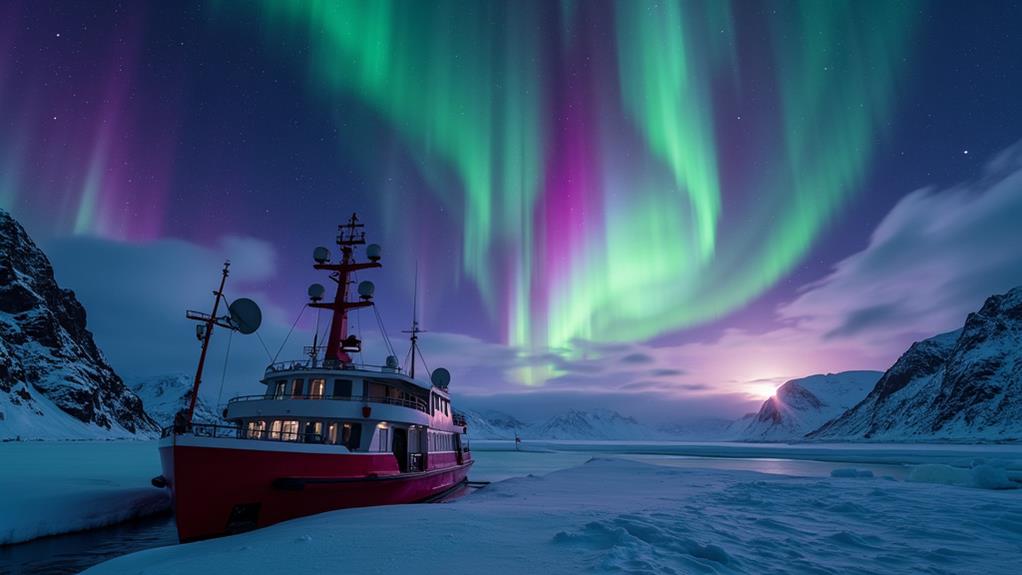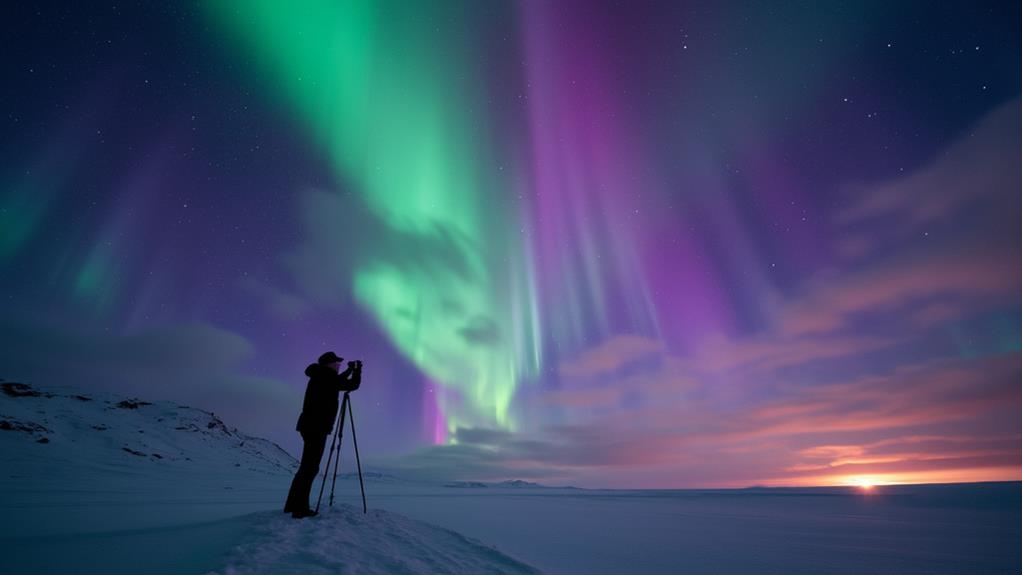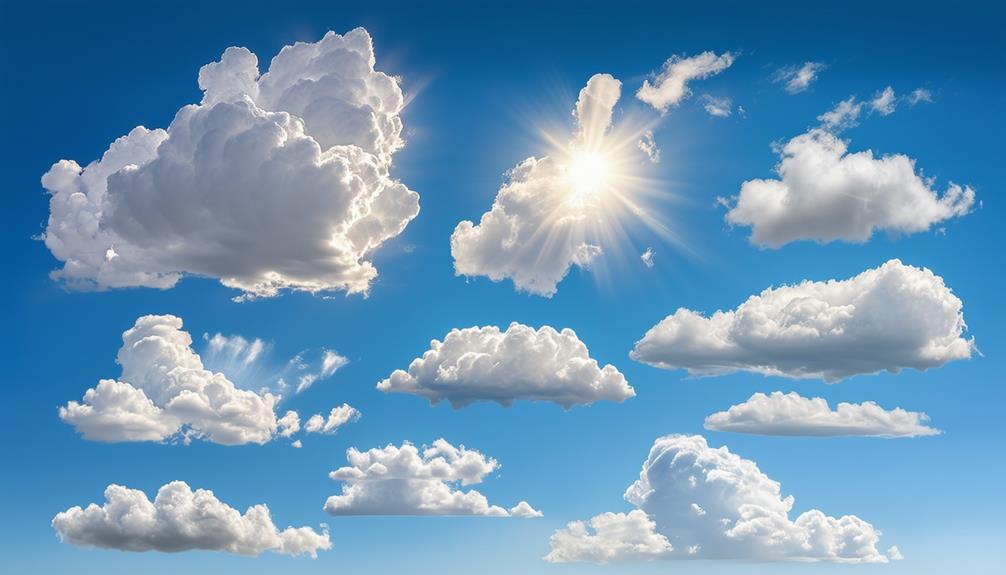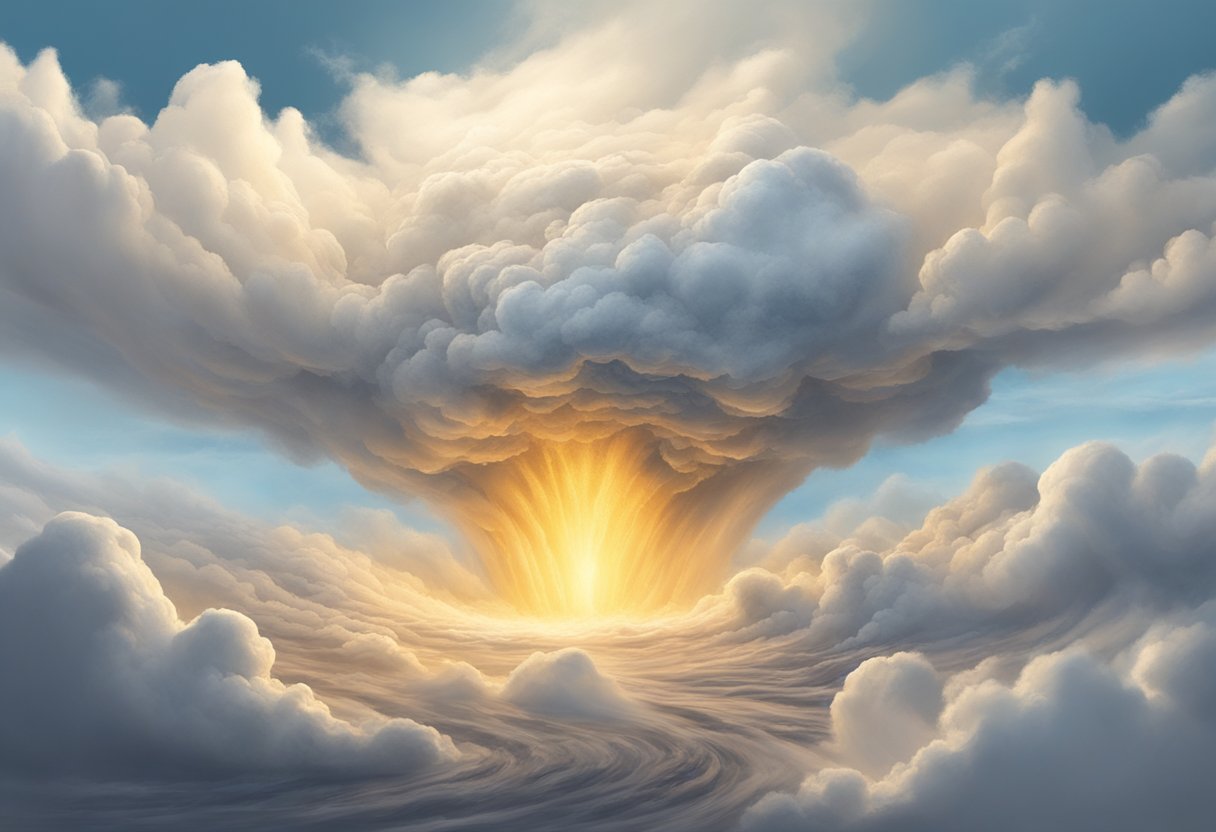Can You Hear the Northern Lights? The Science of Auroral Sounds
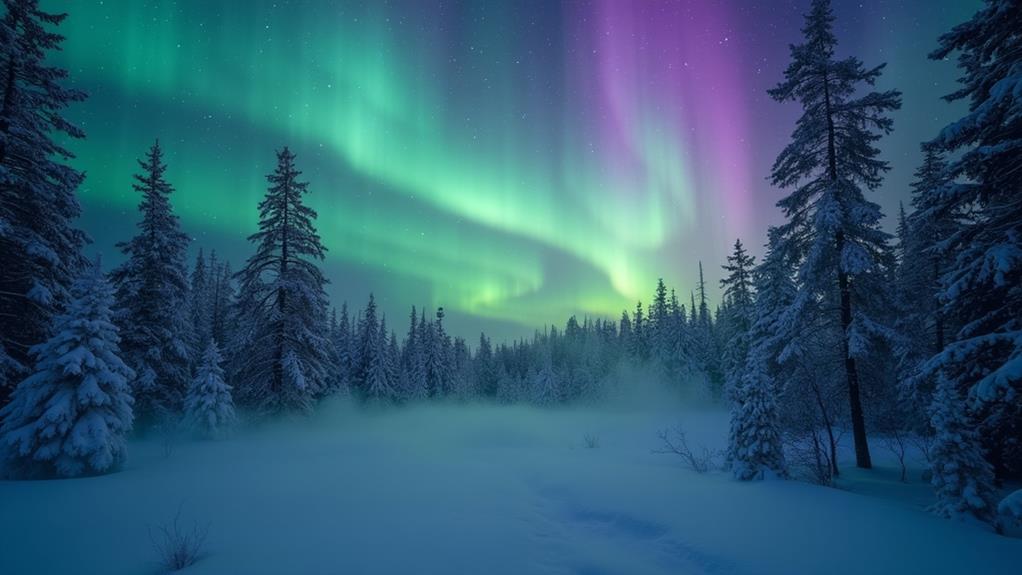
You're probably familiar with the stunning visuals of the Northern Lights, but have you ever wondered if you can actually hear them? This intriguing question has puzzled scientists and aurora enthusiasts for years. Recent studies suggest that the mysterious sounds—often described as crackles or whooshes—might originate from corona discharges high above the ground. These sounds could reach levels comparable to a jet engine under certain conditions. So, what's the science behind these auroral sounds, and could there be more to uncover? Let's investigate the mechanisms and theories that might just provide the answers.
Understanding the Northern Lights
The Northern Lights, or Aurora Borealis, are a captivating phenomenon resulting from charged particles from the solar wind interacting with Earth's magnetic field. When these particles enter the atmosphere, they collide with gases, producing breathtaking light displays primarily visible near the magnetic poles. The colors in an aurora vary depending on the type of gas involved: oxygen at lower altitudes emits green light, while at altitudes above 290 km, it produces red light. Nitrogen interactions can result in blue or purple hues.
Auroras become more frequent and vivid during periods of increased solar activity, as solar winds, traveling at approximately 45 million mph, enhance both the visibility and intensity of the displays. Planning a visit during such peak activity periods can increase your chances of witnessing this natural spectacle.
Understanding the science behind the Aurora Borealis not only enhances the experience but also underscores the complex interactions between charged particles and Earth's magnetic field. This fascinating interplay has captivated both scientists and the general public, fostering a deeper appreciation for our planet's atmospheric and magnetic phenomena.
Historical Reports of Auroral Sounds
Auroral sounds have fascinated people for centuries, with historical accounts from the 19th century describing noises such as crackling, whooshing, or whizzing accompanying the lights. These reports were widespread, documented in places like northern Canada, Norway, and mentioned in The Shetland News during the 1930s. The broad cultural awareness indicates that these sounds have been recognized across various regions and times.
Despite numerous historical accounts, early scientific skepticism emerged. Given that auroras typically occur at altitudes of around 100 km or higher, many dismissed these auditory experiences as folklore or psychological illusions. Prominent scientists, including Sir Oliver Lodge and George Clark Simpson, suggested that these auroral sounds might be auditory illusions linked to visual stimuli rather than actual sound phenomena.
However, a theory proposed by Clarence Chant in the 1970s offered a new perspective. He suggested that the motion of auroras could alter Earth's magnetic field, potentially generating audible crackling sounds. This theory has gained recognition and is largely accepted in modern discussions, providing a scientific basis for these historical accounts of auroral sounds.
Scientific Investigations and Discoveries
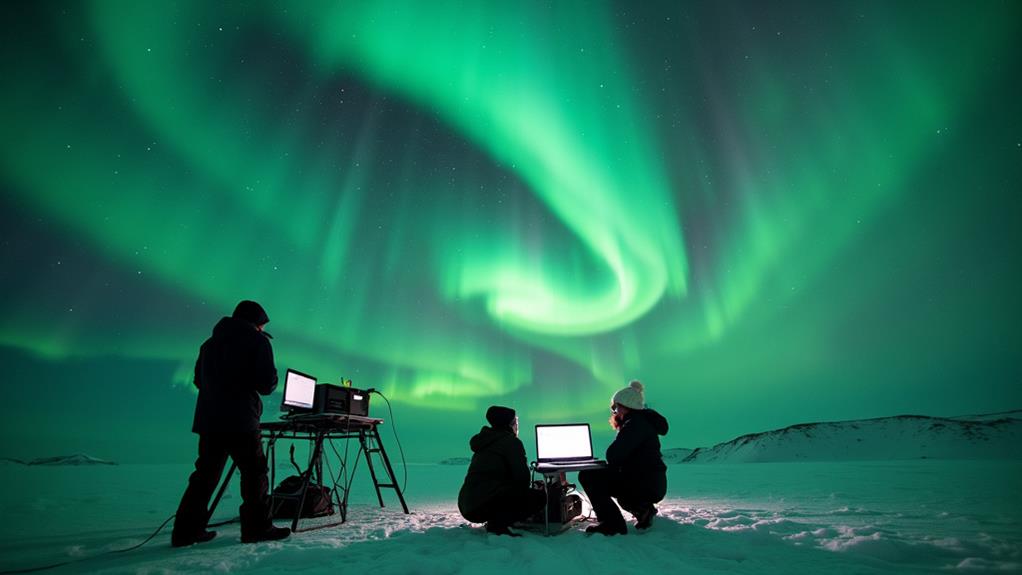
Since the late 20th century, scientific investigations have intensified efforts to unravel the mysteries of auroral sounds. The Aurora Acoustics Project, initiated in 1999, has been pivotal in this endeavor. By deploying sensitive microphones and dome-shaped reflectors during geomagnetic storms in Finland, researchers have made significant strides in capturing and analyzing these elusive sounds.
Key findings from these studies include:
- Auroral sounds may originate from corona discharges occurring approximately 70 meters above the ground, associated with temperature inversion layers.
- Sound pressure levels from auroral sounds can reach up to 60 dB at ground level, with sources estimated to produce 90-100 dB.
- Frost events, where frozen water in trees creates cracking sounds, might also contribute to auroral noise.
Despite initial skepticism within the scientific community, interdisciplinary research is gaining traction. This research aims to bridge the gap between acoustics and space physics, providing a more comprehensive understanding of auroral sounds. The Aurora Acoustics Project is leading the way in deciphering the auditory phenomena associated with the northern lights, aligning with the scientific community's quest to uncover the truth behind these enigmatic sounds.
Mechanisms Behind Auroral Sounds
Auroral sounds may reach your ears through different mechanisms. The Inversion Layer Theory suggests that temperature inversions on cold nights enable these sounds to travel greater distances. Another explanation, the Electrophonic Hearing Hypothesis, posits that your brain can directly convert electromagnetic waves from auroras into audible sounds.
Inversion Layer Theory
The Inversion Layer Theory provides a compelling explanation for the elusive phenomena of auroral sounds. According to this theory, these sounds originate from temperature inversion layers, where warmer air traps cooler air near the ground. These conditions are ideal for sound propagation, particularly during cold, calm Arctic nights. During geomagnetic storms, electrical discharges about 230 feet above the ground interact with these inversion layers.
Auroral sounds, such as pops and crackles, may be heard when this electrical activity disrupts the inversion layers, causing static electricity effects. These sounds are more likely to be audible during winter months when temperature inversions are more frequent.
Key points to consider:
- Sound Propagation: Inversion layers trap sound near the ground, making auroral sounds more discernible.
- Height of Generation: Auroral sounds are produced approximately 230 feet above ground during geomagnetic storms.
- Sound Levels: Auroral sounds can reach 60 dB on the ground, with estimates of 90-100 dB at the source.
Understanding these mechanisms helps explain why some people report hearing the Northern Lights, a phenomenon rooted in unique atmospheric conditions.
Electrophonic Hearing Hypothesis
The Electrophonic Hearing Hypothesis offers an intriguing perspective on auroral sounds, suggesting that these experiences might originate from internal perceptions rather than external noises. According to this hypothesis, the electrical activity associated with auroras can stimulate your auditory nerves, leading to perceived sounds in your brain.
Research indicates that changes in the electromagnetic field during auroral activity can interact with your body's electrical systems, potentially causing these auditory sensations. This might explain why some people report "hearing" auroras even in the absence of detectable environmental sound.
Historical accounts often describe auroral sounds as crackling or hissing, which could be your body's response to the electrical discharges in the atmosphere. This aligns well with the Electrophonic Hearing Hypothesis. While this theory provides a compelling explanation for auroral sounds, further interdisciplinary research is needed to fully validate the connection between auroral displays and the reported auditory sensations. So, the next time you think you hear the Northern Lights, it might just be your brain responding to the electromagnetic phenomena in the sky.
Cultural Significance and Folklore
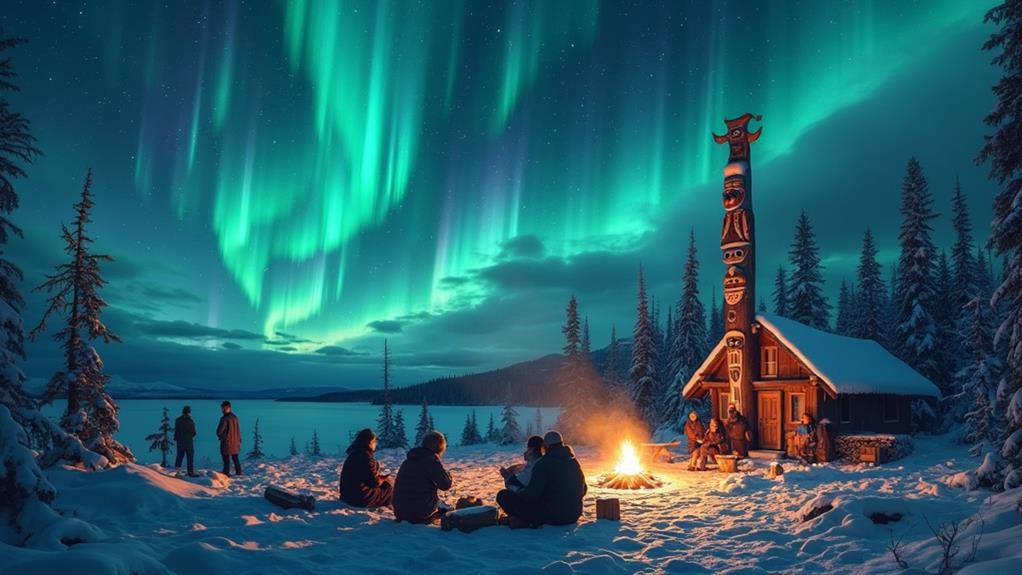
The Northern Lights have inspired a plethora of legends and myths across various cultures. Vikings believed they were reflections of Valkyries' armor, while Finnish folklore attributed them to sparks from the tails of mythical fire foxes. Scottish and Indigenous interpretations also contribute to the rich tapestry of stories, underscoring the deep historical and spiritual significance of the auroras.
Mystical Aurora Legends
Imagine standing beneath a sky filled with shimmering lights, each culture offering its own mystical explanation for this mesmerizing display. The aurora borealis, often referred to as the Northern Lights, has inspired countless legends across the globe. For the Vikings, these mystical lights were thought to be reflections of Valkyrie armor as they led fallen warriors into the afterlife. This epic imagery painted the auroras as celestial indicators of eternal honor and valor.
In Finnish folklore, the origin of the Northern Lights is attributed to fire foxes who create sparks in the sky with their swift movements. This enchanting tale captures the magical essence of the auroras, blending natural phenomena with animal mythology.
Greenlandic mythology offers a more spiritual interpretation, viewing the auroras as the souls of deceased children dancing joyfully in the sky. This belief imbues the lights with a poignant connection to the afterlife and spiritual world.
- Vikings: Reflections of Valkyrie armor leading fallen warriors.
- Finnish Folklore: Sparks created by fire foxes.
- Greenlandic Mythology: Souls of deceased children dancing.
These diverse legends showcase the aurora's profound impact on human imagination, linking nature's light show to our deepest cultural and spiritual beliefs.
Historical Beliefs Explained
The mystical legends surrounding the aurora borealis reveal deep cultural insights into how ancient societies interpreted the natural world. Across diverse cultures, the enchanting lights of the aurora borealis have sparked imaginative tales and historical beliefs. For the Vikings, the shimmering glow represented reflections from the armor of Valkyries, the mythical warrior maidens. Finnish folklore described the phenomenon as sparks created by fire foxes, adding a touch of magic to the natural spectacle.
In Greenland, the lights were believed to be the spirits of deceased children, highlighting a deep cultural connection to the natural world and the afterlife. The Scots, on the other hand, linked the northern lights to fallen angels and fierce battles among warriors, illustrating the awe and fear these lights inspired.
Indigenous peoples like the Sámi and Inuit have long reported hearing sounds associated with the aurora, integrating these auditory experiences into their rich cultural narratives. These sounds were not merely figments of imagination but were woven into storytelling traditions, emphasizing the importance of these phenomena in shaping human understanding of the sky's mysteries. These historical beliefs underscore the profound cultural significance of the aurora borealis.
Recent Research and Theories
Recent research has unveiled intriguing insights into the origins and nature of auroral sounds. Studies suggest these sounds may originate from corona discharges in the atmosphere, occurring approximately 230 feet above the ground during geomagnetic storms. This explanation aligns with the Inversion Layer Theory, which posits that temperature inversion layers, often forming on cold nights, facilitate the propagation of auroral sounds.
Key points of interest include:
- Auroral sounds are more likely to be heard during periods of peak solar activity, which correspond to the 11-year solar cycle.
- The Aurora Acoustics Project has utilized sensitive microphones to capture low-frequency sounds during intense geomagnetic storms, revealing rare audible phenomena.
- Ongoing debates within the scientific community highlight the necessity for interdisciplinary collaboration to fully understand these auditory experiences.
Researchers have discovered that during geomagnetic storms, temperature inversion layers can amplify auroral sounds. Consequently, on specific cold nights, you might actually hear the northern lights if you are in the right location at the right time. The interplay between geomagnetic activity and particular atmospheric conditions is crucial in making these sounds audible.
Future Directions in Auroral Sound Studies
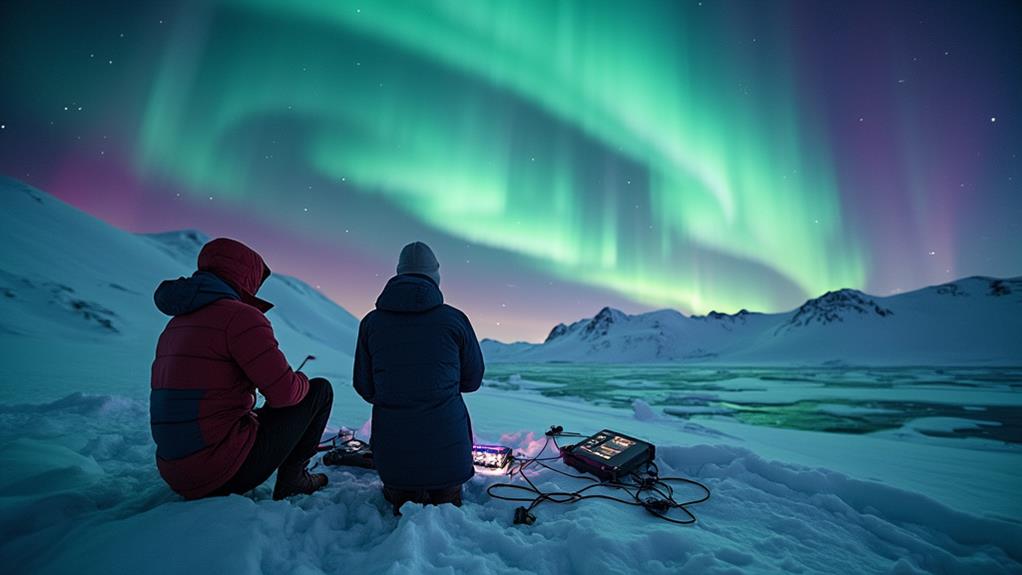
Future research in auroral sound studies aims to validate the Inversion Layer Theory, which posits that auroral sounds originate from temperature inversions occurring during geomagnetic storms at approximately 230 feet above ground. To capture these elusive sounds more effectively, Professor Unto K. Laine plans to construct a glass tower rising 39-49 feet (12-15 meters). This innovative structure will enhance recording techniques, providing clearer insights into these atmospheric phenomena.
Researchers will also explore correlations between auroral sounds and frost events, which can produce similar cracking noises at comparable altitudes. By examining these connections, scientists hope to differentiate between various atmospheric sound sources, bridging the gap between acoustics and space physics and challenging the long-held perception of auroras as silent.
The findings from these studies could significantly enrich our understanding of atmospheric physics and its interactions with solar activity. By delving into the auditory aspects of geomagnetic disturbances, researchers aim to provide a more comprehensive view of these spectacular natural events. Future directions in auroral sound studies promise to illuminate the complex dynamics at play in our atmosphere.

